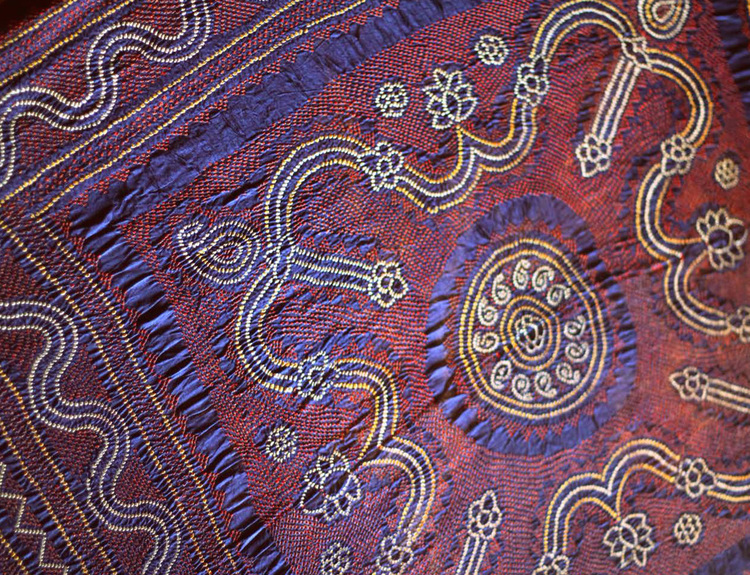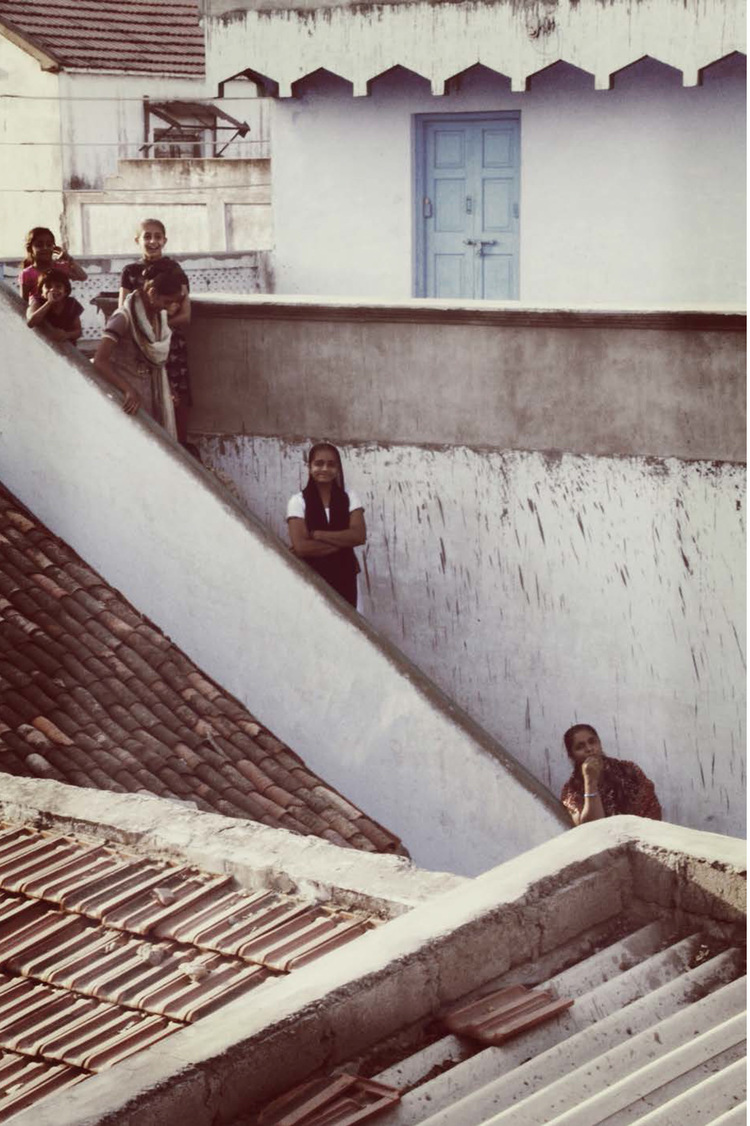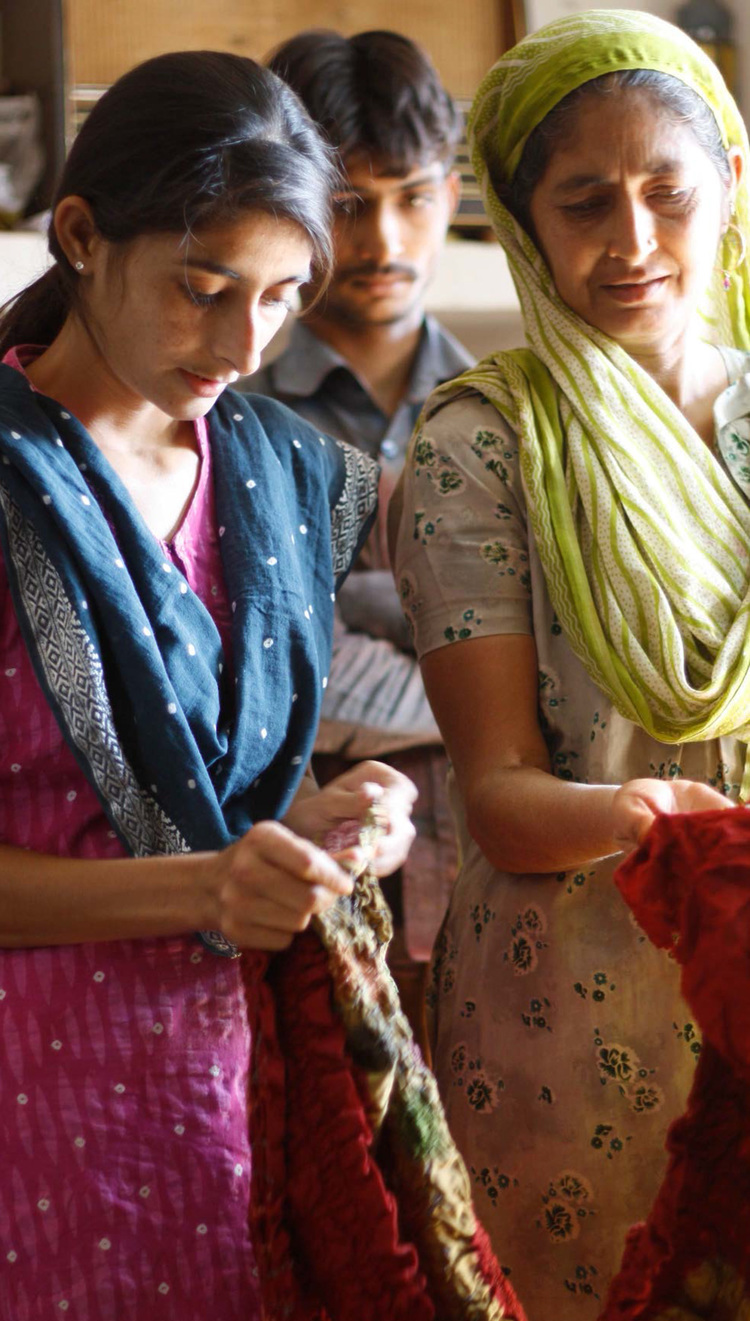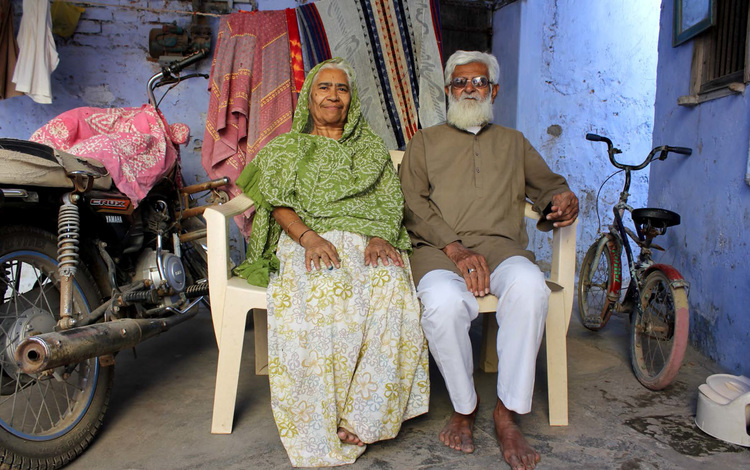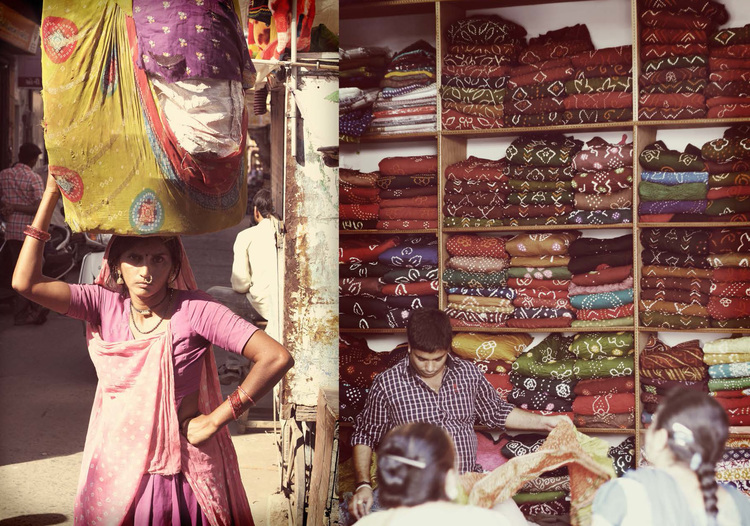Anjar
Anjar, a region best known for the Jesal Toral Samadhi, is a busy region with many artisans at work with different crafts. Jesal Jadeja was a robber who was shown the right path by Toral, and their burial location is visited by many locals and tourists. Legend has it that Jesal had gifted his wife a bandhani blouse known as a gaj. The bandhani business in Anjar is also mainly of tying. Before, there were 1 00-1 50 artisans, and it was only the work of Khatris, but in the last 30 years, Maheshwaris, Ghadvis, Bhanushalis, Jains, Suthars and Luhars have all joined the profession. This has made it easier for the bandhani businessmen as the demand is high, and these women do very good work. Due to the efforts of other artisans, NGOs and the government, the business has allowed many people to earn a living from this work.
Anjar’s artisans depend heavily on orders received from Jamnagar, as the market for expensive garments is mostly located outside of Kachchh. Jamnagar is a large production center for bandhani, and is known for its dyeing and trading with other parts of India and the world. Jamnagar has its own bandhani, but it is thicker than that of Kachchh. Businessmen from Jamnagar, many of them who are Khatris, travel to Kachchh regularly to get their pieces tied here. The demand for high quality work has led to a long business relationship between Jamnagar's bandhani artisans and those in many parts of Kachchh. The raw material is sent to Bhuj for printing, villages for tying, and dyeing in Bhuj or Jamnagar. Jamnagar is also known for its screen printed saris, dupattas and other garments that are available at much cheaper rates than authentic bandhani items. The design and look is unique and easily identifiable.
Spotlight on the artisans: Abdul Kadar Suleman Khatri
Abdul Kadar Suleman Khatri learnt the craft from his mother and maternal grandfather, Khatri Dawood Abdullah, who won a National Award for an ambadal sari in 1973. When he was young, Kadarbhai used to tie shawls for 50 paisa while his father earned a living as a block printer working in other people's workshops. He gets all his raw materials from businessmen in Jamnagar who send him plain woven fabric and he prints the design, gets it tied locally and then sends it back to be dyed and sold. His materials range from silk saris to real zari gharcholas and ceremonial odhanis for Muslim communities.
PRODUCT FOCUS: AHIR ODHANI
“It is their specialty, they need that dark 'bottle' green color in their odhanis. It is the color of their identity.”
- Abdulaziz U. Soneji, Abdasa.
The Ahir community were originally cattle breeders but are now mainly farmers. On festive occasions, the women wear a blouse with cups and sleeves of mashru tie dye silk and their veil cloth is also a colourful bandhani or printed silk cloth. For everyday use, this community uses malmal odhanis in a distinct dark green color with some red designs. This odhani is known as a bepota as it is a combination of two dupattas combined together
Spotlight on the artisans: Salma
Salma is a 22 year old girl who has been tying for close to 12 years already. She started as soon as she left school and learned the skill from her mother. Her grandmother, mother, and aunt all know how to tie bandhani and work together in the house. Her father is a block print artisan, and uncle works in bandhani.
Explore more regions:




